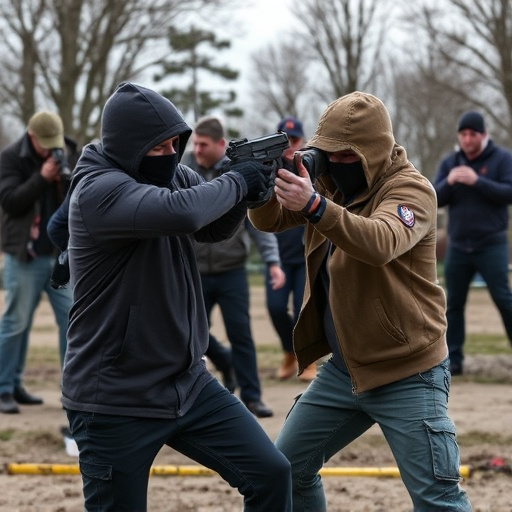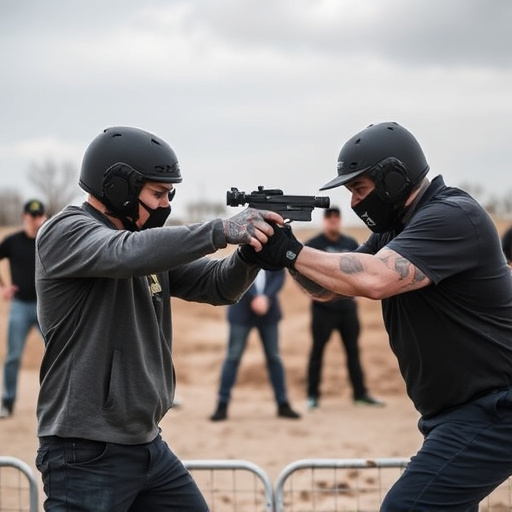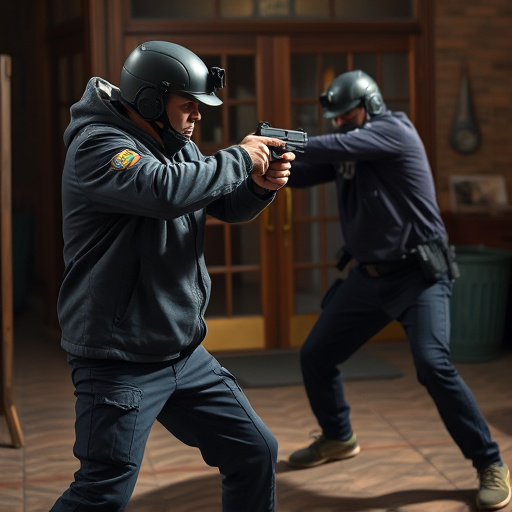Non-lethal stun guns, available online with varying amperage levels, temporarily incapacitate individuals through electrical pulses. While offering personal safety solutions, their legal regulation differs across jurisdictions, requiring users to understand regional laws and device safety features. Factors like amperage, durability, and user-friendly design are crucial when choosing a stun gun, balancing power and safety for effective self-defense. Online research is essential to navigate legal implications and select a suitable non-lethal stun gun, ensuring responsible use while prioritizing public safety.
“Electrical shock weapons, commonly known as stun guns, have gained popularity as non-lethal self-defense tools. This article delves into the intricacies of these devices, focusing on understanding their operant principles, especially the role of amperage in delivering effective shocks. We explore the legal landscape surrounding online stun gun purchases and emphasize safety features crucial for responsible use. Additionally, we guide readers through key considerations when choosing the right non-lethal stun gun.”
- Understanding Non-Lethal Stun Guns: A Brief Overview
- The Science Behind Electrical Shock Weapons: Amperage Explained
- Legal Considerations and Regulations for Stun Guns Online
- Safety Features and User Guidelines for Effective Non-Lethal Disruption
- Choosing the Right Stun Gun: Factors to Consider for Purchase
Understanding Non-Lethal Stun Guns: A Brief Overview

Non-lethal stun guns, often referred to as electroshock weapons, are designed to temporarily incapacitate individuals using electrical current. These devices have gained popularity both for law enforcement and personal protection, especially in scenarios where non-fatal force is required. When activated, a stun gun delivers a strong electric shock, disrupting muscle control and causing the target to fall to the ground, providing a critical window of opportunity for officers or individuals to gain control.
Stun guns operate on principles of electrical engineering, using high voltage but low amperage to ensure safety while maximizing effectiveness. This is in contrast to traditional weapons that focus on delivering lethal force. Online availability of non-lethal stun guns has grown, offering a range of options for consumers seeking personal protection. However, it’s crucial to understand the legal implications and safety measures associated with owning and using such devices, as regulations vary by region.
The Science Behind Electrical Shock Weapons: Amperage Explained

Electrical shock weapons, often referred to as stun guns or non-lethal stun devices, utilize electric current to incapacitate a target temporarily. The key to their effectiveness lies in amperage—the measure of electrical charge flowing through a circuit per second. These weapons emit a high-voltage, low-amperage pulse, typically ranging from 10,000 to 40,000 volts. While the voltage is enough to cause a powerful shock, the low amperage ensures it’s non-lethal, delivering a jolt that disrupts muscle control and causes temporary paralysis without causing significant harm.
Amperage plays a crucial role in the design of these devices, balancing the need for sufficient power to stop an aggressor with safety precautions to prevent serious injury. The exact amperage output varies among models, with some specialized units designed for specific applications, such as crowd control or animal control, featuring different current levels. Shopping for non-lethal stun guns online allows buyers to explore various options, considering amperage ranges and other features to find the most suitable device for their needs while adhering to safety guidelines.
Legal Considerations and Regulations for Stun Guns Online

The legal landscape surrounding non-lethal stun guns, often available for purchase online, is a complex web that varies significantly from one jurisdiction to another. In many countries, these devices are regulated under specific laws designed to balance personal safety with public order. Online sales add an extra layer of complexity due to the ease of cross-border transactions and the potential for misuse or unauthorized distribution.
Regulators often impose strict guidelines on the sale and possession of stun guns, including requirements for age verification, licensing, and specific amperage limits. For instance, many countries allow only low-amperage devices (typically below 1200 joules) to be sold to civilians, ensuring they remain non-lethal while still offering effective protection. E-commerce platforms must adhere to these regulations, carefully screening vendors and products to maintain compliance and guarantee the safety of their online communities.
Safety Features and User Guidelines for Effective Non-Lethal Disruption

The design of non-lethal stun guns online often incorporates safety features to ensure responsible use and minimize risks. These weapons emit a powerful electric current that disrupts muscle control, enabling effective restraint without causing permanent harm. Advanced models may include protective mechanisms like automatic shut-off after a set activation time or sequence, ensuring users don’t accidentally overload the device or misuse it. Some manufacturers also emphasize user guidelines, recommending specific body targets for optimal effect while avoiding areas with vital organs to prevent severe injury.
When employing non-lethal stun guns, it’s crucial to follow additional safety measures. Users should undergo proper training to understand the weapon’s capabilities and limitations, ensuring they can deploy it effectively in high-pressure situations. Regular maintenance and inspection are essential to keep the device in optimal working condition. Additionally, users must be aware of local laws and regulations regarding stun gun ownership and usage, as these guidelines vary by region, ensuring compliance and promoting public safety.
Choosing the Right Stun Gun: Factors to Consider for Purchase

When considering the purchase of a non-lethal stun gun, several factors come into play to ensure effectiveness and safety. One key aspect is understanding the amperage or electrical current it delivers. Amperage measures the flow of electrons in a circuit and, in the context of stun guns, determines the intensity of the shock. Higher amperage generally results in a more powerful stun, but it’s crucial to balance this with safety considerations.
Online research is essential for comparing different models, reading reviews from verified buyers, and understanding the legal implications in your region. Additionally, check for features like durability, ease of use, and additional safety mechanisms such as a safety switch or lock. The right stun gun should offer a balance between powerful jolts to incapacitate an assailant temporarily and safe operation to prevent accidental harm.
Non-lethal stun guns, with their specific amperage levels, offer a powerful tool for self-defense and security. Understanding the science behind electrical shock weapons, their legal landscape, safety features, and key purchase considerations empowers individuals to make informed decisions when navigating the market for non lethal stun guns online. By adhering to guidelines and choosing the right device, users can effectively disrupt potential threats while prioritizing safety.
